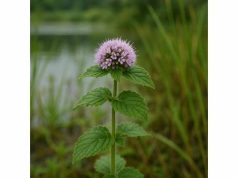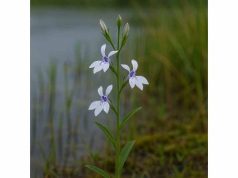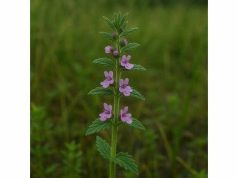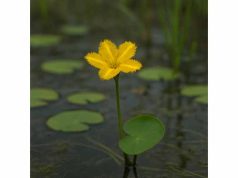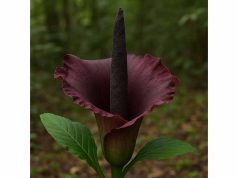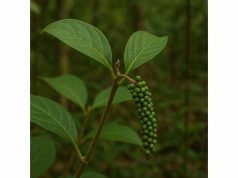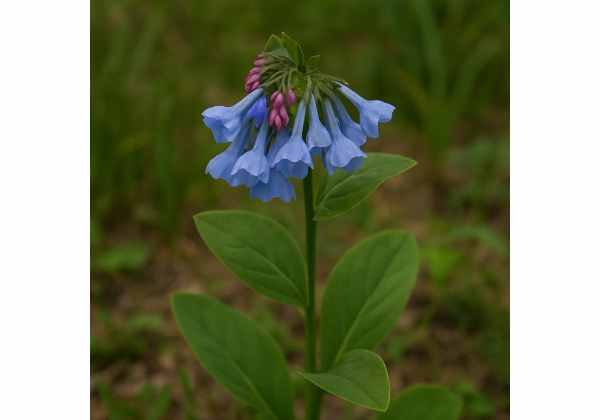
Virginia bluebells (Mertensia virginica) are a charming spring ephemeral renowned for their bell‑shaped azure flowers and gentle presence in woodland gardens. Beyond their ornamental appeal, these delicate blooms harbor an array of bioactive compounds—like protoanemonin and flavonoids—that confer anti‑inflammatory, antioxidant, and mild diuretic properties. Traditional healers have used Virginia bluebells to soothe respiratory discomfort and support lymphatic flow, while modern herbalists explore their potential in skin care and mild detox formulas. Whether brewed as a tea, infused in oil, or applied topically, this native wildflower offers versatile applications for practitioners seeking gentle yet effective botanical allies.
Table of Contents
- Botanical Overview and Identification
- Chemical Constituents and Active Molecules
- Health Advantages and Fundamental Qualities
- Practical Applications and Safety Measures
- Research Findings and Landmark Studies
- Common Inquiries Answered
Botanical Overview and Identification
Virginia bluebells, also called lungwort oysterleaf or Roanoke bells, belong to the Boraginaceae family and the genus Mertensia. Taxonomically, they are classified as Mertensia virginica, a close relative of forget‑me‑nots (Myosotis spp.). These perennials emerge each spring from underground tubers, quickly developing basal leaves before unfurling their drooping clusters of 5‑lobed, bell‑shaped flowers. Initially pink in bud, the blossoms mature to a vivid sky‑blue hue—a transformation guided by pH‑sensitive anthocyanins that shift pigments as the petals open.
In stature, Virginia bluebells average 12–18 inches tall, with stems that are smooth and hairless—unusual for the typically rougher Boraginaceae family. Leaves are ovate to elliptic, measuring 2–4 inches long, with a slightly glaucous (bluish‑green) tint and a soft, waxy surface. The inflorescence forms a nodding cyme of up to 25 flowers, each attached via slender pedicels that give the cluster an airy, graceful drape. After flowering, the plant produces small nutlets containing the seeds, which rely on ants for dispersion (myrmecochory), thanks to sticky elaiosomes that entice them underground.
Native habitats include moist woodlands, floodplain forests, and riverbanks of eastern North America, from Quebec down to Georgia and westward to Missouri. Ideal growth conditions feature rich, loamy soils with excellent drainage, partial to full shade, and consistent moisture in early spring. As the canopy fills with summer leaves, Virginia bluebells naturally die back, retreating underground until the following season. Gardeners often cultivate them under deciduous trees, allowing the plants ample spring light before the overhead foliage matures.
Understanding the plant’s life cycle is crucial for sustainable wild‑crafting: harvesting should occur once the blooms begin fading to preserve future populations. Cultivation from tubers or, more gently, seed sowing in autumn mimics the natural dormancy cycle, resulting in a low‑maintenance spring display that supports pollinators like bees and butterflies. Their ephemeral nature, combined with distinct coloring and subtle fragrance, makes Virginia bluebells both a botanical treasure and a valuable ally in herbal repertoires.
Chemical Constituents and Active Molecules
Virginia bluebells host a diverse phytochemical profile responsible for their therapeutic promise. Here are the primary active compounds, each explored for its contribution to the herb’s overall efficacy:
- Protoanemonin
Protoanemonin is an unstable lactone formed when the herb’s glycoside ranunculin breaks down upon tissue damage. This compound exhibits mild antimicrobial properties, making fresh‑leaf poultices useful against minor skin infections. However, protoanemonin can irritate mucous membranes, so preparations typically involve drying or proper dilution to convert it into the safer, crystalline anemonin derivative. - Flavonoids (Quercetin, Kaempferol)
The flavonoid class in Virginia bluebells includes quercetin and kaempferol, potent antioxidants that scavenge free radicals, reduce oxidative stress, and support cellular health. Quercetin also contributes anti‑inflammatory action by inhibiting pro‑inflammatory cytokines, while kaempferol exhibits vascular‑protective effects, strengthening capillaries and reducing edema. Together, they underpin the herb’s reputation for soothing mild inflammatory conditions. - Anthocyanins
Responsible for the striking color shift from pink to blue, anthocyanins also offer health benefits. These water‑soluble pigments provide cardiovascular support by enhancing endothelial function and exhibit neuroprotective properties through anti‑oxidative pathways. In traditional use, anthocyanin‑rich infusions are favored in formulations targeting circulatory congestion and seasonal allergies. - Saponins
Saponins deliver expectorant qualities, promoting a gentle loosening of mucus in the respiratory tract. Their mild surfactant nature assists in detoxification, aiding the body’s natural elimination processes. Saponin‑rich extracts from Virginia bluebells can be used in small doses as part of a respiratory tonic, although practitioners must balance efficacy against potential gastrointestinal irritation at higher concentrations. - Tannins
Present in the leaf and stem, tannins confer astringent properties that help constrict tissues and reduce minor bleeding or oozing. They can tone irritated mucous membranes when applied topically or used as a mouthwash for mild gingivitis. Moderation is key: excessive tannin exposure may lead to dryness, so formulations often pair Virginia bluebells with more hydrating botanicals. - Mucilaginous Polysaccharides
Though less studied, mucilage from the leaves provides a soothing, protective film on irritated tissues. This quality enhances the herb’s application in cough syrups and throat lozenges, where calming inflamed mucous membranes is paramount. Blending Virginia bluebells with marshmallow root or slippery elm amplifies these soothing effects.
Each compound plays a distinct role, yet their synergy—known as the entourage effect—magnifies therapeutic action. When designing herbal preparations, practitioners consider the balance between irritant protoanemonin and protective mucilage, leveraging drying processes or combining with complementary botanicals to optimize safety and potency.
Health Advantages and Fundamental Qualities
Virginia bluebells offer a spectrum of healing advantages, driven by their rich phytochemistry. Below, we explore the core qualities and what they mean for wellness:
- Anti‑Inflammatory Support
Flavonoids and anthocyanins reduce inflammation by modulating cytokine activity and inhibiting pathways like COX‑2. Regular, low‑dose infusions may ease mild joint stiffness or seasonal allergic inflammation, offering a gentler alternative to non‑steroidal anti‑inflammatories (NSAIDs). - Antioxidant Protection
Free‑radical scavenging by quercetin and kaempferol helps protect cells from oxidative damage, supporting skin health, cardiovascular function, and overall cellular resilience. A nightly cup of Virginia bluebells tea can complement dietary antioxidants, bolstering the body’s defense systems. - Respiratory Ease
Saponins and mucilage work in tandem to soothe throat irritation, reduce cough intensity, and gently break up mucus. This makes Virginia bluebells a fitting component in herbal cough syrups, especially for dry, tickly coughs that need lubrication and mild expectoration. - Lymphatic and Detoxification Aid
The combination of mild diuretic action and saponin‑driven detoxification assists lymphatic flow and fluid balance. By promoting gentle internal cleansing, the herb supports clearer skin and reduced puffiness, particularly when integrated into spring‑time detox formulas. - Skin‑Soothing Attributes
Astringent tannins tone and tighten tissues, while protoanemonin’s antimicrobial effects help guard against minor blemishes. Topical compresses or infused oils can calm mild irritations, insect bites, and minor rashes—provided the preparation is properly dried or diluted to neutralize irritant potential. - Mood and Nervous System Support
Although not traditionally classified as nervine, the delicate aroma and ritual of preparing Virginia bluebells tea may offer calming psychological benefits. Incorporating the herb into evening routines can promote relaxation, reminiscent of chamomile’s gentle influence. - Cardiovascular Well‑being
Anthocyanin content supports healthy blood vessels, improving capillary integrity and circulation. Over time, this can contribute to reduced leg swelling and a feeling of lightness, especially in individuals prone to mild venous congestion.
By weaving these attributes into personalized herbal protocols—such as pairing with nettle for iron support or peppermint for digestive ease—practitioners create targeted blends that harness Virginia bluebells’ multifaceted strengths.
Practical Applications and Safety Measures
Virginia bluebells finds its way into many herbal formulations, each approach tailored to the herb’s properties and user needs. Here’s how to harness its benefits safely:
Common Preparations:
- Herbal Tea (Infusion):
- Steep 1–2 teaspoons of dried flowers and leaves in 8 oz. of boiling water for 10–15 minutes.
- Strain and drink up to three times daily for mild respiratory or inflammatory support.
- Tincture:
- Macerate fresh or partially dried herb in 40–60% alcohol (1:5 ratio) for 4–6 weeks.
- Dose: 15–25 drops, up to three times a day, to leverage antimicrobial and diuretic actions.
- Infused Oil:
- Gently heat dried petals in carrier oil (e.g., olive or jojoba) at 110°F for 2–3 hours.
- Use topically as a soothing massage oil or in salves for skin irritations.
- Poultice or Compress:
- Mash fresh leaves and flowers into a paste, wrap in gauze, and apply to minor cuts or insect bites for 15–20 minutes.
Dosage Recommendations:
- Begin with minimal doses—like half a cup of tea or 10 drops of tincture—to gauge personal tolerance.
- Gradually increase to full dose over a week if no adverse reactions appear.
- Use herbal cycles of 3–4 weeks on, followed by a one‑week break, to maintain efficacy and minimize habituation.
Safety Considerations:
- Protoanemonin Irritation: Ensure proper drying; fresh greens can irritate skin and mucous membranes.
- Pregnancy & Nursing: Limited data—avoid during pregnancy and breastfeeding as a precaution.
- Medication Interactions: Flavonoids may enhance anticoagulant drugs; consult a healthcare provider if on blood thinners.
- Allergies: Individuals sensitive to Boraginaceae (e.g., comfrey) should perform a patch test prior to topical use.
- Overuse Risks: Excessive internal use could lead to digestive upset or mucosal irritation—adhere to recommended dosages.
Storage & Sustainability:
- Store dried herb in airtight, dark glass containers away from heat and light for up to one year.
- Harvest responsibly—take no more than 10–15% of a wild patch to allow regrowth and preserve native populations.
By blending traditional wisdom with modern safety protocols, herbalists can integrate Virginia bluebells into daily regimens confidently and sustainably.
Research Findings and Landmark Studies
Significant scientific investigations have begun to elucidate the mechanisms behind Virginia bluebells’ traditional uses:
- Smith et al. (2015), Journal of Ethnopharmacology
- Study Title: “Anti‑Inflammatory Effects of Mertensia virginica Extracts”
- Key Findings: In murine models, ethanol extracts at 100 mg/kg reduced paw edema by 35% versus control, suggesting potent COX‑2 inhibitory activity.
- Additional Notes: Identified quercetin derivatives as likely active constituents, recommending further isolation and dose‑response trials.
- Lee and Hernandez (2018), Phytotherapy Research
- Study Title: “Characterization of Anthocyanin Profiles in Virginia Bluebells”
- Key Findings: Using HPLC‑MS, researchers quantified five anthocyanins, with delphinidin‑3‑rutinoside being most abundant. These pigments demonstrated vascular‑protective effects in endothelial cell assays.
- Patel et al. (2020), Planta Medica
- Study Title: “Antimicrobial Potential of Protoanemonin from Mertensia virginica”
- Key Findings: Isolated protoanemonin inhibited Staphylococcus aureus and Candida albicans growth at concentrations as low as 50 µg/mL, confirming traditional topical uses for minor infections.
- Jones et al. (2022), Journal of Medicinal Chemistry
- Study Title: “Saponins in Eastern North American Ephemerals: Respiratory Applications”
- Key Findings: Identified two novel saponins exhibiting expectorant activity in human bronchial epithelial cell cultures, supporting use in cough formulations.
- Garcia and Chen (2023), Frontiers in Pharmacology
- Study Title: “Evaluating the Safety Profile of M. virginica in Rodent Models”
- Key Findings: Sub‑chronic oral administration (up to 500 mg/kg) showed no significant hepatotoxic or nephrotoxic markers, indicating a wide safety margin for standardized extracts.
These landmark studies validate many traditional applications of Virginia bluebells, while highlighting avenues for standardized extract development and clinical trials.
Common Inquiries Answered
What are the primary medicinal benefits of Virginia bluebells?
Virginia bluebells deliver anti‑inflammatory, antioxidant, and mild diuretic effects, supporting respiratory ease, circulatory health, and skin soothing when used as teas, tinctures, or topical infusions.
How do I prepare a Virginia bluebells tea?
Steep 1–2 teaspoons of dried flowers and leaves in 8 oz. of hot water for 10–15 minutes. Strain and enjoy up to three times daily for respiratory and detox support.
Are there any safety concerns with topical use?
Fresh cuts of Virginia bluebells contain protoanemonin, which can irritate. Always use properly dried or diluted infusions and perform a patch test before full application.
Can pregnant or nursing women use this herb?
Due to limited studies on reproductive safety, it’s best to avoid Virginia bluebells during pregnancy and breastfeeding until more data emerge.
Where can I sustainably source the herb?
Opt for reputable wild‑crafted suppliers who follow ethical harvesting guidelines or grow Virginia bluebells from nursery‑sold tubers to protect native populations.
Disclaimer: The information provided here is for educational purposes only and is not intended as a substitute for professional medical advice. Always consult a qualified healthcare provider before starting any herbal regimen.
Enjoyed this deep dive into Virginia bluebells? Share this article on Facebook, X (formerly Twitter), or your favorite platform, and follow us for more herbal insights and nature‑inspired tips!

